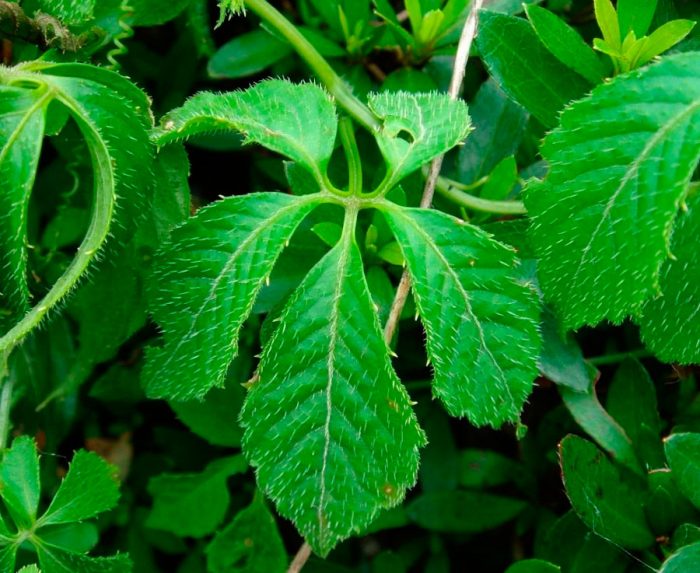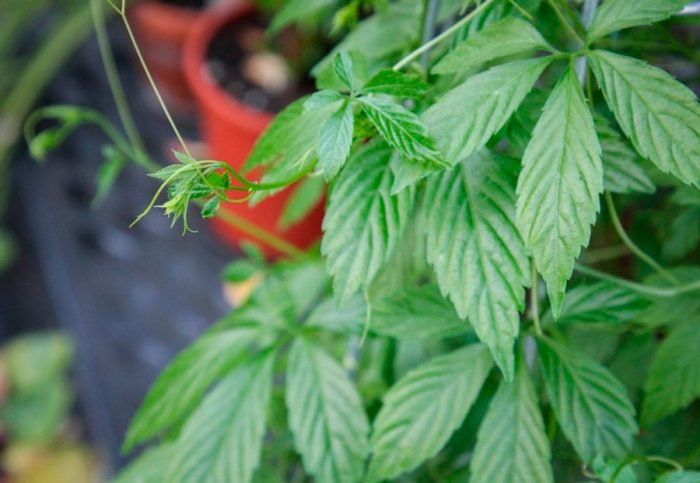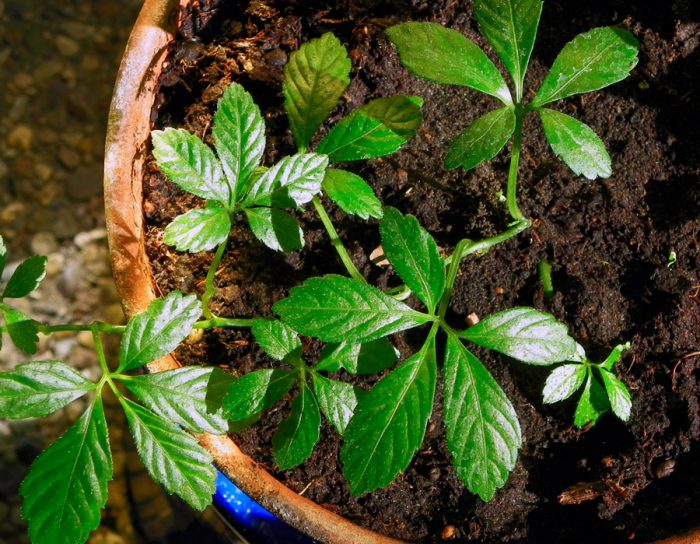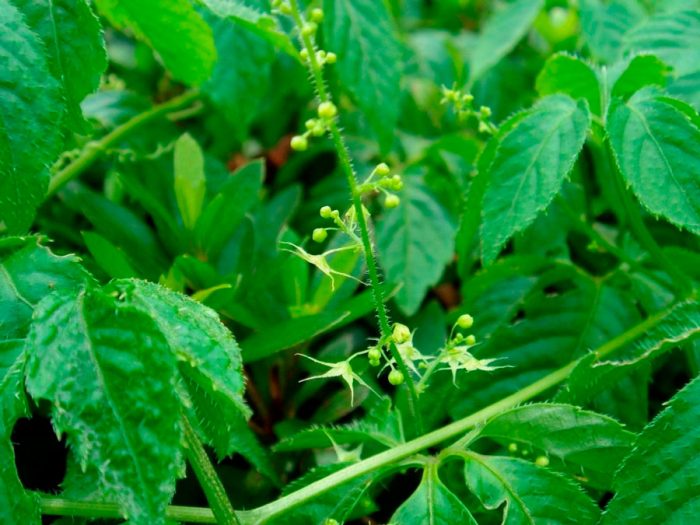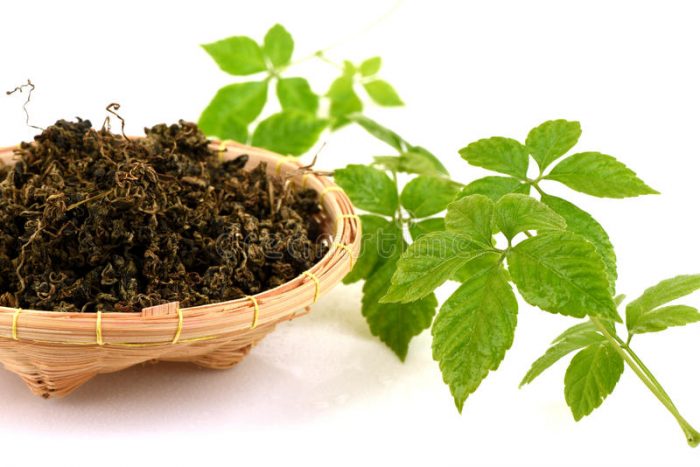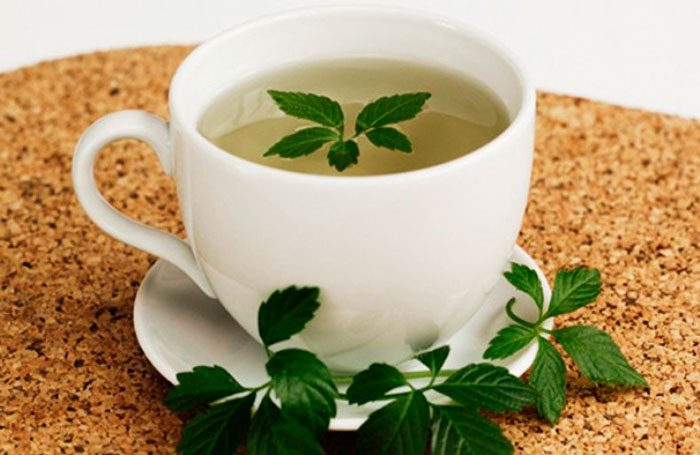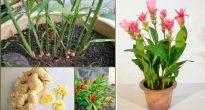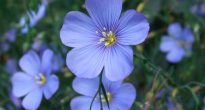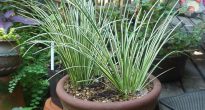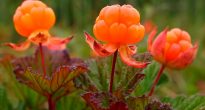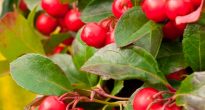The herbaceous plant Gynostemma is a member of the Pumpkin family. In the wild, this plant can be found in the tropics of Southeast Asia from New Guinea to Malaysia and from the Himalayas to Japan. In Japan, there are about 15 species of this plant, 9 of which are endemic. Gardeners cultivate a species of gynostemma pentaphillum (lat. Gynostemma pentaphillum), this plant has other names among the people, for example: Thai tea, herb of immortality, southern ginseng, as well as "jiaogulan" or "jiaogulan". At first, in Europe, this culture was grown exclusively at home, and only after some time in the southern regions, they began to decorate garden plots with such a plant. After the Beijing Conference in 1991, where discussions were held on medicinal plants used in alternative medicine, the popularity of gynostemma has increased several times.
Content
Features of gynostemma five-leafed
Gynostemma is a dioecious climbing plant. This perennial vine can be naked or pubescent. Opposite glossy leaf plates have petioles and a finger-like shape, they include from 3 to 9 lanceolate leaflets serrated along the edge. Paniculate or racemose inflorescences consist of flowers that do not represent any decorative value. The flowers have a short tubular corolla of pale green or white color, which is deeply dissected into 5 narrow-lanceolate lobes. To understand where is female and where is male is possible only during flowering. The female inflorescences, and also the stamens in the flowers, are shorter than that of the male specimen. Such a liana blooms in the middle of the summer period, and its flowering stops only in the first autumn weeks. The fruit is a spherical black berry, reaching 0.6 cm in diameter, they contain from 2 to 3 seeds. If such a vine grows in favorable conditions, then the length of its stems can be equal to about 8 m.
Growing gynostemma five-leafed
Planting gynostemma five-leafed
For growing gynostemma five-leafed, it is recommended to choose a well-lit open area (it can also be slightly shaded). The soil should be well-drained, light and rich in nutrients.If you already have a gynostemma on your site, then a more effective and simple method can be used to propagate it, namely cuttings.
Before proceeding with sowing, the seed is immersed in lukewarm water for 24 hours, then it is sown in pots. It is necessary to deepen the seeds into the substrate only 20 mm, the soil mixture should consist of sand and humus or compost. The containers must be covered with foil on top and removed to a relatively warm place (from 20 to 22 degrees). The first seedlings should appear after 3-6 weeks. After this happens, the shelter should be removed, and the containers should be transferred to a well-lit place (the light should be diffused). It is very simple to care for the seedlings, it must be watered on time, as well as systematically loosened the surface of the soil mixture. After the plants start branching, you will need to install a support.
Seedlings are planted in open soil in May after the soil warms up to 15-16 degrees. However, before that, you should start preparing the site. It is dug up, while introducing 5 to 6 kilograms of compost or humus into the soil. When digging heavy soil, it is necessary to additionally add sand or peat to it. Seedlings are planted by transshipment. It should be borne in mind that the size of the planting hole should only slightly exceed the volume of the plant's root system taken with a lump of earth. After the bush is placed in the planting hole, it must be covered with soil. The surface around the plant is tamped a little. The planted vines need good watering. After the liquid is completely absorbed into the soil, it must be covered with a layer of mulch (compost or humus), the thickness of which should be from 50 to 80 mm. After the gynostemma is planted, you will need to immediately install a support for it, its role can be played by a building wall or a fence.
Gynostemma care
Watering should be frequent, regular and abundant. As a rule, it is carried out 1 time in 1–1.5 weeks, while it should be borne in mind that the soil near the plants should be constantly slightly damp (not damp). If there is a prolonged drought, then every evening or morning the foliage of such vines must be moistened from a sprayer, for this they use lukewarm water. When the bushes are watered or it rains, the surface of the soil around them must be loosened, as well as all the weeds.
In the first year of growth, the gynostemma does not need to be fed, since it will have enough of those nutrients that were introduced into the soil when preparing the site for planting. In subsequent years, it is recommended to feed such a liana with Kemira's solution, while under 1 bush it is necessary to add from 30 to 40 grams of the drug. This complex fertilizer contains all the nutrients that are needed for the normal growth and development of such a crop. In the case when foliage is used throughout the season for the preparation of various dishes (salads, soups, etc.), then it is only necessary to feed the bushes by the root method; in this case, it is strictly forbidden to spray the foliage with a nutrient solution.
Gynostemma has relatively low frost resistance. The bushes can withstand a drop in temperature only to minus 18 degrees, but if they are covered with a layer of snow, they will endure the winter quite well. When growing such a plant in regions with practically snowless winters, lianas will need shelter, for this they are covered with spruce branches or with a thick layer of loose leaves. When growing this crop in regions with frosty winters, it is recommended to remove the bush from the soil in autumn and plant it in a pot. Until the onset of spring, the plant is kept in a well-lit room, while the heating devices should be at a sufficiently large distance from it. The bush must be provided with the same care as for any other plant that has a dormant period.
How to collect and store gynostemma
Gynostemma foliage is collected throughout the summer. The collected leaves must be dried. Fresh stems, as well as leaves, are suitable for making soups and salads, while the dried leaves make a very healthy tea.
Collected stems and foliage must be spread out in a semi-dark well-ventilated room or under a canopy outside for drying. After the raw material becomes brittle, it can be considered completely dry. The crushed raw materials are removed for storage in a dry room, they are first poured into bags or paper boxes, as well as into glass or ceramic jars with a tight-fitting lid. Ripe gynostemma berries are very sweet and edible.
Types and varieties of gynostemma
There are about 20 different types of gynostemma, but only one is cultivated by gardeners - gynostemma five-leafed. In middle latitudes, such a crop is grown extremely rarely, in this regard, practically nothing is known about the varieties and varieties of this plant.
Properties of gynostemma
Useful properties of gynostemma
Gynostemma was not included in the Pharmacopoeia, therefore, it is not currently used in traditional medicine. But in informal medicine, this culture enjoys a certain popularity, because it is similar in biological indicators to the widely known ginseng. The benefits of such a plant can be judged by the stories of the aborigines, who claim that tea made from gynostemma leaves contributes to the fact that they remain completely healthy and active for up to 100 years. The fact that this culture has medicinal properties became known to people in the two hundred years BC.
The taste of young stems and foliage is slightly sweet. Such a plant contains many vitamins, as well as calcium, zinc, phosphorus, selenium, magnesium, potassium and other elements that the human body needs. The aerial part of the plant contains more than eight dozen saponins, while ginseng contains only 28 of them. Regular use of this plant can significantly improve endurance and increase efficiency. In this regard, products prepared on the basis of gynostemma are recommended for those who are experiencing great physical exertion.
This plant differs from ginseng in that it does not contribute to arousal, and if used regularly, it will have a sedative effect. This vine is an excellent substitute for sugar, which is recommended for people with diabetes. This plant helps to reduce blood cholesterol levels, improve memory, strengthen the immune system, heal the digestive tract and genitourinary system, and slow down aging.
To make healing tea, you need to combine 1 tbsp. freshly boiled water and 1.5 tsp. dried leaves of gynostemma or 2-3 tsp. fresh foliage. The drink will be ready in 5 minutes. The same herb can be brewed 5 or 6 times in a row. To increase working capacity, it is recommended to drink 3 tbsp per day. such a drink.


Watch this video on YouTube
Contraindications
Gynostemma can be used by everyone, because it has no contraindications. But people with individual intolerance should refuse to use this vine. Such a plant in some cases contributes to an increase in pressure, so hypertensive patients should be careful when using it. People with sleep disorders should not take gynostemma after 4 pm and until the morning. Nothing is known about how the plant affects the health of pregnant and breastfeeding women, so they should not take it.

